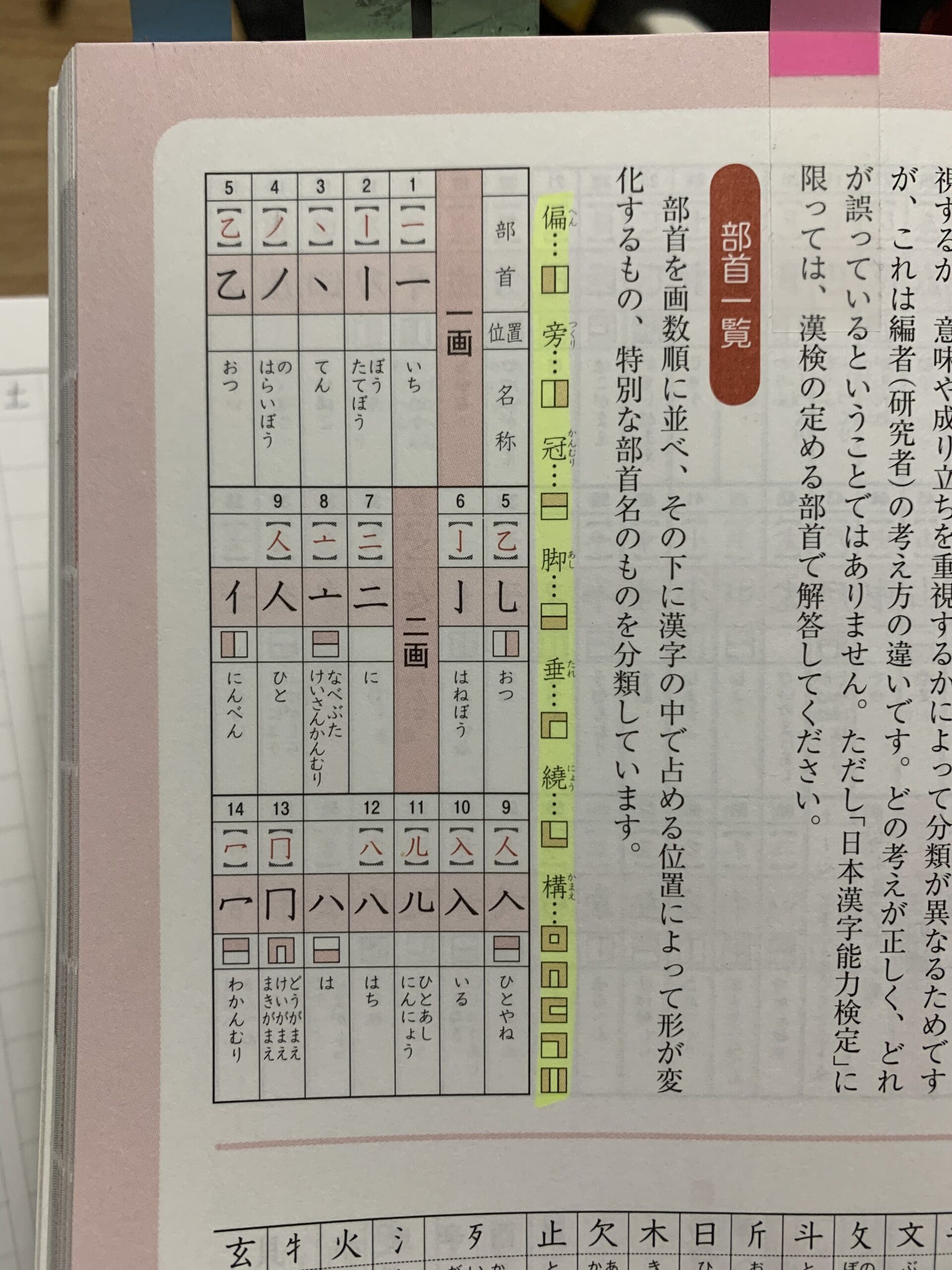Maploper: Doc Kane (self-paced program)
Kickoff Date: April 21, 2025Season ONE: Dazai Osamu, Daffodil
Day 19
May 9, 2025
I must admit, it’s super cool getting the hang of writing these kanji radicals and developing the muscle memory that goes along with it. Andy’s advice to not screw around with romaji resulted in me noticing today that the pronunciation I was writing down for different kanji was starting to repeat itself. Well, that’s cool… what’s going on there?
If you look at my notes, you’ll see the pattern: へ, and べ repeating with the kanji I was practicing. So, asked Reiko… “I’m noticing these patterns, it must mean something, right?” Well, of course it does you dingbat, Doc. Turns out (if you’re not already familiar), that that repeating へん, and べん, tells us where these radically significant kanji radicals appear within other kanji (not to mention when they stand alone as well). Now, how ’bout them apples!
This is the sort of thing, DC Palter talks about when it comes to kanji being logical and very “math-like.” DC knows his stuff… he’s author of quite legendary Colloquial Kansai Japanese (which is awesome, by the way if you want to learn Kansai-ben) and founder of Japonica on Medium.
Now, I’m hardly good at math, and even I can attest to the simplicity of all of this. It’s quite fascinating when you go about learning the right way. Fantastic stuff this へん, and べん. I can’t wait to see what more I learn. One final note on this: check out the screenshot of a page from one of Reiko’s million Japanese language reference books that populate the office. Neat, right? More to come.
The other thing I tackled today, was to go back to the foundational course to go over the first paragraph some more. Reiko has been noticing when I go through my Anki deck there are things I’m unnecessarily getting stuck on, and thought revisiting the paragraph would be wise. It certainly was. Aside from the two words I hadn’t yet seen in my deck, I was pretty much able to read it at a natural pace, but what the re-read and re-examination of the story’s vocabulary did for me though, was put everything in context. And that will help me move through the blocks I’m experiencing.
It’s important to note that she had to point this very obvious thing out to me. Why? Because I KNOW this. Or, I should know it. And, yet I didn’t think to do it. It had to be recommended to me by someone watching my learning behavior. Andy has played the same role in me getting going and NOT GETTING STUCK for more time than is necessary. THIS is what great coaches, teachers instructors do for us, and it is the reason we require our self-paced learners to work with a tutor.
It is that important.
Reiko and I built this program together…, we purposely designed it to work within the context of the story…, I talk incessantly about that aspect of the Maplopo Method… and yet, to follow my own teaching because of everything else I’m doing (and the necessary shift to kanji and hiragana). I started, got sidetracked, and forgot to loop back. Worse, I didn’t notice I was stuck in the mud. My instructors saved me.
If you want to do more with your Japanese, I cannot recommend Andy enough to help you either go through our program, or work on something entirely different. He’s great. If he is too booked to help you with our program, and you already work with a tutor, have your instructor reach out to us so we can get them certified in the program to help you in that regard. If you’re not yet ready for our program, get a private instructor of Japanese anyway if you’re serious about your Japanese.
Alrighty! Nearly one month in, and I can hardly believe it.
Happy learning, and good luck to you all!
D
Time spent: @ 1 hour (and off-clock time to get back to the main program… perhaps 15 more minutes)
Completed Anki deck: Yep.
Start time: 9:09pm
End time: 10:03pm

